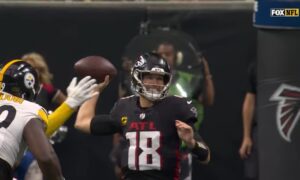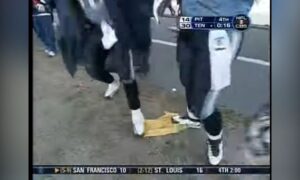The Pittsburgh Steelers releasing offensive tackle Levi Brown was just a matter of time. The organization’s decision to move on from inside linebacker Larry Foote at the same time was somewhat unexpected, though not entirely surprising.
After all, the Steelers played almost all of the 2013 season without the aging signal caller, having handed the keys to the defense over to then-rookie Vince Williams. He gradually acclimated to the defense, and by the end of the season seemed to be fitting in just fine both on and off the field.
Outside of Williams, the Steelers still retain the rights to Kion Wilson and Terence Garvin, and there is always the possibility of 2012 third-round draft pick Sean Spence contributing in some capacity this year.
Make no mistake, however, that this move above all else was about Foote—not Williams, not Spence.
Having gained insight into the post-Foote world last season, the Steelers were able to take a step back and realize that his knowledge of the defense wasn’t enough to justify keeping him around when they were ready to move on.
When Foote was originally brought back in 2010, he played sparingly as the top reserve inside linebacker, and performed admirably. Come 2011, the Steelers were beginning to phase out long-time Buck linebacker James Farrior by rotating Foote in, who still played well in his more limited snaps.
When the Steelers released Farrior in 2012, Foote took over the Buck position, and rarely came off the field. The performance that he turned in, however, was often wanting, replacement-level at times. He was overmatched by the speed of today’s tight ends and running backs in coverage, and he became increasingly stuck to pulling guards on running downs.
The beginning of the 2013 season was, unfortunately, more of the same, as guards Andy Levitre and Chance Warmack repeatedly drove him out of holes for Chris Johnson and Jackie Battle.
Foote was the greatest liability in run support in this game, which included missing two tackles. More often than not, though, he was simply blocked out of the play. The misfortune of his eventual injury toward the end of the game was a blessing in disguise by forcing the Steelers to move on.
Though his release said nothing about a failed physical, it’s possible that the team was concerned with how his biceps tear would impact his play on the field. Either way, it’s hard to make the argument that he was a cap casualty.
Foote’s cap number for this season was under $2 million, and his release left two-thirds of $1 million in dead money. It’s not much more of a blip on the overall cap meter. What this tells me is that the Steelers were ready to move on.
The team has a recent history bringing back players that they’ve cut, however, such as Stevenson Sylvester, who was re-signed mid-season. Quite frankly, I don’t see Foote having much of a market, including the possibility of the Steelers bringing him back on a veteran-minimum contract. Unless they experience an unusual rash of injuries at the position and Foote keeps himself in shape in-season, I wouldn’t expect to see Foote back.







